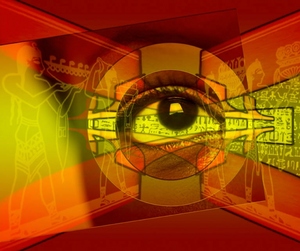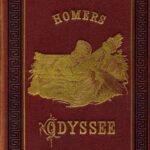Ancient Egypt worshipped many gods and goddesses, each of which had their own mythical story. Most pulled multiple duties. Such is the case with the goddess Hathor who reigned over womankind, fertility, and motherhood.
Like is often the case with myths, the stories about Hathor are widely varied. Many believed that it was Hathor who gave birth to the other Egyptian gods and goddesses. In these instances, it would make her both mother of as well as daughter to her own son (Re).
Others say that Hathor was responsible for the birth of all living gods on earth; represented by Egypt’s kings and pharaohs. Still others called her the mother of the world.
Hathor was often portrayed with the face of a cow or as a human female wearing the horns of a cow with a circle between them. The circle represented the sun which was Re, her first born. The significance of Hathor’s association with the cow is that the animal nurtures its young with its milk much as Hathor nurtures her people with her benevolent love.
The daughter of the Sun God, Re, Hathor was sometimes depicted in association with him. Some called her the “eye of Re” believing that she watched over mankind much as a mother watches over her children.
However, others believed that the goddess only watched mankind so that she could report their sins back to her father Re. Many claim that the concept of the all seeing “evil eye” began with Hathor. These followers saw the goddess as a raging, vengeful goddess, not as a benevolent mother. This Hathor was more often pictured in the form of a ferocious lioness.
No matter which version of Hathor was embraced, one thing remained constant; her connection with that which gives meaning and quality to life. Hathor’s powers were believed to be unusually strong. She was often referred to as a celestial goddess or even the mistress of heaven itself; all knowing and all seeing.
Hathor had dominion over many aspects of life including love, beauty, joy, pleasure, sexuality and happiness. She was also the goddess of music and dance.
Still others claim that Hathor had connections to the underworld. She is even referred to in the Egyptian book of the dead. It is believed that she guided the deceased to their final destination, continuing to watch over them there as she had done while they were alive.
The sycamore tree was considered sacred to Hathor because she used the tree to shelter and protect her charges from their enemies as they made their journey from the world of the living to that of the dead.
Hathor was often pictured carrying an musical instrument called a sistrum. Many believed the instrument had power over fertility. Others said it had power over the sexual act itself. Unfortunately, I could not locate any specific information that shed any further light on this belief.
Hathor was an exceedingly popular goddess who, at one point in history, had as many as sixty-one priestesses within her sacred temple that was eventually located at Dendera. Although women primarily served her in the early times, there was also evidence that male priests may have also served the goddess in later years.
Many Egyptians prayed to Hathor to bring them wealth and good fortune in their lives. Others, such as farmers merely sought out the goddess’s protection over and cultivation of their crops. They performed religious rituals to the goddess by bringing cows into the field to milk them. They would then pour the milk into ground as libation for the goddess, hoping that she would, in turn, bless their crops.
In some references, Hathor is noted as the mother of Horus. However, I found an equal number of references that claimed Isis was the Horus’s mother.
Like many of Egypt’s former gods and goddesses, Hathor’s name remains well known throughout the world. Although the various tales of the goddess may differ significantly, it remains clear that she was one of the most respected deity’s of her time.





